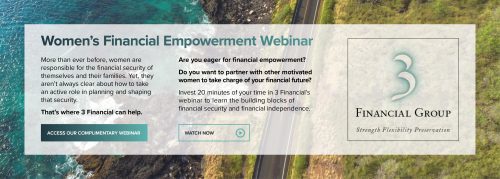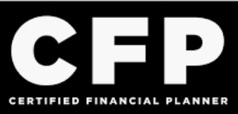
Women’s Financial Planning Step 1: Establish A Financial Identity
Financial planning for women is critically important for your wellbeing. Women live longer than men and earn less over their lifetimes. That means every year of saving and every dollar invested counts. Creating a smart financial strategy will help you manage your finances wisely and build wealth.
Your financial planning journey starts with establishing your financial identity. For too many women, their financial identity is non-existent or tied up with a spouse, partner, or family member. This can cause problems when a crisis hits, or when they want to buy a house or save for a goal independently.
Fortunately, establishing your own financial identity can take just five simple steps.
1. Set up Bank Accounts
Let’s start with the basics – opening and setting up your bank accounts. It’s common for women to have joint accounts with spouses, which can be a handy method to approach shared expenses. But women should also have at least one personal account under their own name and should ensure that their name is on all joint accounts.
Why is it important to list your name on accounts? You need to establish your own financial identity, apart from your spouse or your family. That’s how you build a credit history under your own name (more about that below) and how you prepare yourself for whatever comes in the future by guaranteeing that you have access to funds.
After all, half of marriages end in divorce. Having your own financial identity makes you better positioned to rebuild.
2. Build Credit
The next step to creating your financial identity is to build your own credit score.
To get a good credit score, it’s important to only use a portion of your available credit, to pay off your balance each month, and to pay on time every time. You can become an authorized user on your spouse’s credit card – but that’s a short-term fix to build a little credit. In the long run, you will build a better credit history and score by opening your own card.
Getting a credit card isn’t the only way to build your credit score, however. Paying off a car loan, a mortgage, and even utilities can help build your credit score, as well, if the loans and payments are all in your name. The same rules for building your credit score apply here as well – pay on time and in full every month, and watch your credit score rise.
A good credit score is essential to building wealth later down the line. Having good credit will help you save money when you buy a house and purchase a car, and it can even help you with your job search.
3. Improve Your Financial Literacy
Now that you’ve established the basic foundations of your finances, it’s time to take it up a level. Getting educated on financial topics is essential to truly knowing what you’re doing with your money.
First, start by assessing your current level of financial literacy. Are you just starting to learn about finance basics? Or are you pretty advanced, but looking to brush up on the latest investment advice? Start by thinking about what you already know – and what you’d like to have a better grasp of.
Fortunately, there are plenty of free, easily accessible money management resources available for you to educate yourself wherever your current financial literacy level lies. You don’t necessarily need to choose books or blogs targeted to women, but you may find that focus helpful.
You can check out books from your public library if you want to start exploring resources without spending a lot of money – you might find Smart Women Finish Rich by David Bach and Women & Money by Suze Orman to be helpful. Online resources like Ellevest, Daily Worth, and Investopedia are great online resources for financial topics.
Another resource can be a financial advisor. Teaming up with a financial advisor can help you to maximize your finances as you continue to learn the ropes. The right financial advisor will even take the time to help you understand the ins and outs of your finances, so you can peek behind the curtain, so to speak.
4. Create SMART Goals
Now that you know how to manage your money, what do you want to do with it? Are you saving to buy your first home, for your retirement, or for education expenses for your children? Do you have debts you want to pay off? If you’re married or partnered, what does your spouse or partner want to achieve?
Setting clear, actionable goals will help you create a path to achieving them. The SMART framework for setting goals is helpful – making them “specific,” “measurable,” “attainable,” “relevant,” and “time-bound.” That means instead of setting a goal of buying a house soon, set a goal to save $1,000/per month for 20 months to save for your $20,000 down payment.
If you set goals that are too optimistic and unrealistic for your finances, you are likely to fail and to become even more frustrated with your financial situation. So it’s important to start small with your goals – set ones you can achieve and feel proud of, and then you can start to aim higher with time.
5. Finalize Your Financial Plan
The final step in establishing your financial identity is to create your overall financial plan. If you have a spouse or a partner, you can work together to plan – but remember to ensure that your needs are also represented. Too often, women’s financial goals and planning take a backseat to spousal and family obligations. But it doesn’t have to be this way.
So start your planning – do you feel like you have enough financial education to set and stick to your goals? What do the next few years look like for you financially? What do you need to do to achieve those goals – raise your credit score, earn more income, or stick to your budget closely? How are you, and your spouse/partner, working together towards your mutual goals? And how are you tracking your progress?
There are plenty of paid and free tools available to help you track your financial goals, but a simple spreadsheet can be just as effective. And you don’t have to go it alone on your journey to build your financial identity – you can enlist the help of a skilled professional financial planner who knows the challenges you face and how to handle them head-on.



